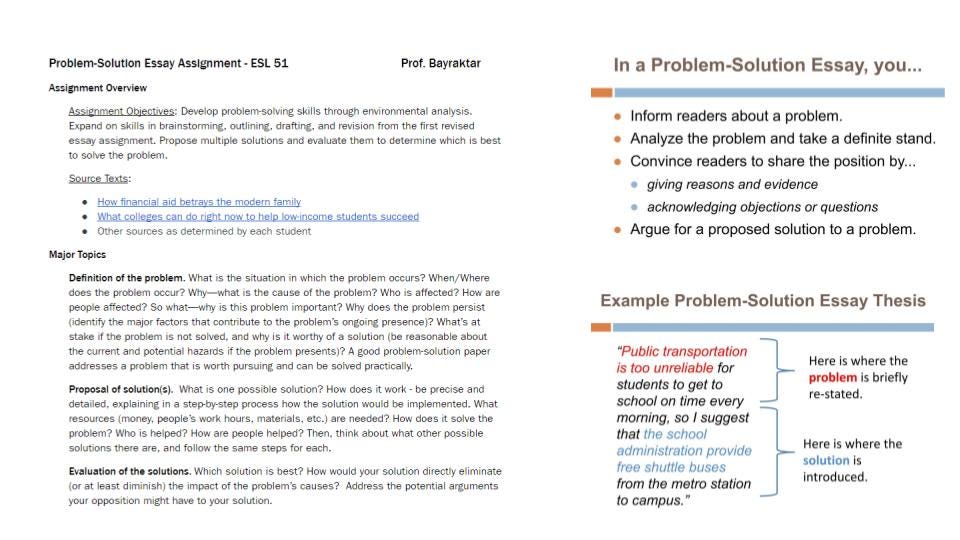Tip: Project-Based & Task-Based Learning
Engage students in authentic assessment through creative projects.
Often we when talk about authentic assessment, the conversation focuses on alternatives to final exams or major course projects. Trying to envision how to change these high-stakes tasks can feel overwhelming, especially when connected to concerns about academic integrity. I think it’s more manageable to think first about how to incorporate offering students choices when possible, such as designing courses with more low(er) stakes assignments, or offering students options of “buckets” of assessments, and building up to incorporating alternatives to traditional high-stakes assignments like research paper alternatives. I like focusing on smaller-stakes assignments to start, not only because they are generally simpler to re-work but also because an average course includes many more of these assignments to play around with.
I focus on these three questions when I am thinking about designing an assessment of student learning - whether that’s a high-stakes, end-of-course assessment, or a low-stakes practice activity:
Is it realistic? Does it replicate or simulate real-life contexts in which students might be asked to apply their knowledge and skills? Can students connect their performance on the assessment to real-life performance in a work- or life-related task?
Is it active? Are students expected to “do” something or create something? Do they have an opportunity to use a repertoire of knowledge and skills to negotiate a complex task?
Does it rely on critical thinking? Does it require judgment and innovation? Do students have opportunities to rehearse, practice, consult resources, and get feedback on and refine performances and products?
I’m going to share two examples from my own teaching - and I hope it goes without saying, but I offer these not as models of perfect practice but rather as always-under-construction examples.
Example #1: High-Stakes Summative Assessment
One of the major assignments I do with my pre-college composition students is a problem and solution writing assignment. Students brainstorm about problems facing college students, select a problem that really inspires them, and then propose a solution to the problem.
I think this project works well for my students for two reasons: first, it asks them to engage in a creative, real-work task of identifying & solving a problem they face; second, completing the assignment relies upon students’ prior knowledge & experiences.
Example #2: Low-Stakes Formative Assessment
In my English courses for multilingual learners, a major goal students have is to improve their written communication skills. One skill we work on is self-editing. Identifying areas in their writing that lack clarity, and then figuring out what needs to change, is a complex skill. We practice as a class and then in small groups identifying points of confusion in real examples of student writing, and then students apply the skills to their own writing. Rather than focusing on specific grammar points in isolation, they are practicing being more aware readers of their own writing and applying their pre-existing knowledge to the real-world task of self-editing.
My approach with both of these examples is inspired by task-based language teaching (TBLT) methodology, which focuses on presenting students with real-world communicative tasks, eliciting authentic language and providing a high degree of intrinsic motivation. Similarly, project-based learning (PBL) engages students in authentic tasks, encourages students to transfer skills and knowledge to other tasks and contexts, and is intrinsically motivating.
Project-based learning (PBL) has been demonstrated to be equally effective and, in some studies, more effective at increasing student learning with underrepresented minority students as it is with white and Asian students. For minority-serving institutions with open admissions policies, PBL has been demonstrated to improve students’ motivation to succeed and boost students’ self-efficacy, which translates into learning gains.
(from Project-Based Learning in Minority-Serving Institutions)
What do you think?
How are you using projects in your courses? What types of real-life application tasks do you ask students to do? If you’re moving in the direction of implementing more of these types of assignments, are you seeing any difference in student performance? If you haven’t added many project-based assignments in your course, what are your hesitations?
For more reading…
A review of project-based learning in higher education: Student outcomes and measures (open access from the International Journal of Educational Research, 2020)
5 Best Practices to Enhance Student Outcomes in Experiential Courses (Harvard Business Publishing)
Using Design Thinking in Higher Education (Educause)
PBL in Higher Education (Worchester Polytechnic Institute)




Coding a new application. Thought it doesn't do the complete coding for me, but does the boilerplate for me, so, it might be useful for me
Part of my philosophy if grading is what I call the "fair F". Basically, if students make an effort to fo an assignment, they get no less than 50%. Since each letter grade is worth 10% out of 100 A=90%+, B=80-89%, C=70-79%, D=60-69% an F should not be worth any less than 10% of 100 (50-59%). If an F is any less than 50%, that will unfairly drag a students grade average down.
Only time I give less than 50% is a zero for not doing the assignment at all.